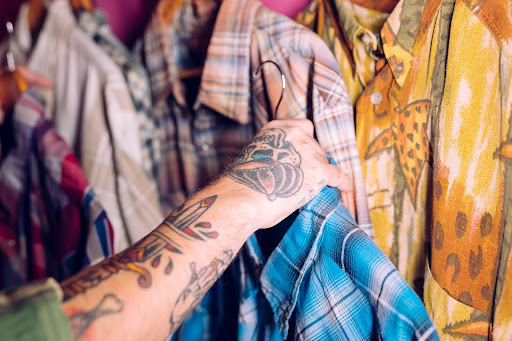Vintage fashion is more than just a trend — it’s a thriving market driven by sustainability, individuality, and nostalgia. For entrepreneurs looking to build a profitable retail business with soul and style, vintage clothing offers unmatched opportunities. But how do you go beyond the occasional thrift find and build a business that actually scales?
Whether you’re launching an online shop, running a boutique, or selling at pop-up events, success in the vintage space starts with the right mindset, strategy, and sourcing approach. Here are the top tips to help you create a profitable vintage clothing business — especially in the European market.
- Define Your Niche Early
The vintage market is broad and diverse — from 70s boho to 90s streetwear and early 2000s Y2K styles. Instead of trying to do everything at once, pick a clear and focused niche to start with. This helps:
- Attract a loyal, like-minded audience
- Create consistent branding and messaging
- Make your buying process more efficient
- Increase your perceived expertise
Popular niche ideas include:
- Branded sportswear (Nike, Adidas, Fila)
- 90s and Y2K fashion
- Designer vintage (Armani, Ralph Lauren, Versace)
- Levi’s denim and workwear
- Military and utility vintage
Once you build a strong foundation, you can expand into related categories to grow your catalog and customer base.
- Partner with a Reliable Vintage Clothing Wholesale Supplier
Your supplier is your secret weapon — or your biggest liability. Partnering with a trustworthy vintage clothing wholesale provider gives you access to high-quality stock that’s sorted, graded, and ready to sell.
Look for wholesalers that offer:
- Clear grading systems (Cream, A, B)
- Flexible lot sizes and handpicked options
- Transparent pricing
- Good communication and fast shipping
- A physical warehouse or video preview option
For example, Italian Vintage Wholesale specializes in vintage fashion for B2B customers and offers curated categories like branded polos, denim, t-shirts, outerwear, and more — all hand-selected in Italy and shipped across Europe.
- Prioritize Quality Over Quantity
In the vintage business, condition is king. You’ll make more profit from selling one well-preserved, authentic 90s sweatshirt than five worn-out, low-grade ones.
When sourcing:
- Always check for stains, holes, or heavy fading
- Understand your supplier’s grading standards
- Invest in “cream” or “grade A” if you’re targeting a fashion-forward audience
- Use steaming, minor repairs, and professional photos to enhance perceived value
Clean, wearable, and photographable garments sell faster — and at better prices.
- Build a Strong Visual Brand
Vintage isn’t just about what you sell — it’s how you present it. From your logo and typography to your Instagram grid and packaging, your visual brand helps define your identity and attract the right customers.
Tips for building a memorable brand:
- Choose a consistent editing style and color palette
- Highlight your niche in every post and product description
- Use storytelling: Share history behind items, brands, and eras
- Use models or styling ideas to show customers how to wear vintage
Modern buyers want more than products — they want an experience. Vintage gives you the perfect raw material to build a visually rich, emotionally engaging brand.
- Leverage Online Platforms Strategically
There are multiple ways to sell vintage clothing online — each with pros and cons. Test a few to see what works best for your products and audience.
Popular platforms include:
- Instagram & TikTok: Great for marketing, drops, and community building
- Depop & Vinted: Easy to start and ideal for casual sellers
- Etsy: Good for curated, higher-value vintage items
- Your own website: Offers control and long-term brand building
- Marketplace sites (e.g. ASOS Marketplace, Imparfaite): Reach global buyers with niche interest
Whichever platforms you use, focus on consistency, fast shipping, and excellent customer service to build trust and drive repeat sales.
- Optimize for Europe-Specific Opportunities
Selling vintage in Europe brings unique advantages — and challenges. Be sure to:
- Understand shipping logistics between EU countries
- Offer multilingual customer support or at least basic translations (English, German, French, Dutch)
- Take advantage of local fashion events, markets, and vintage fairs
- Partner with suppliers inside Europe to reduce delays and customs issues
For example, working with a vintage supplier in Europe like Italian Vintage Wholesale allows you to restock quickly and avoid import headaches while ensuring authenticity and fast delivery to EU destinations.
- Stay on Top of Trends — But Stay True to Your Brand
Vintage fashion thrives on nostalgia, but that doesn’t mean it’s stuck in the past. Social media, fashion influencers, and pop culture constantly influence what’s popular — and which items will sell fast.
Stay tuned to:
- What celebrities and influencers are wearing
- TikTok trends (Y2K, “mob wife,” “clean girl,” etc.)
- Fashion magazines and designer collections
- Customer feedback and buying patterns
Adapt your inventory accordingly, but stay grounded in your core identity. A cohesive brand outlasts every short-term trend.
- Think Long-Term: Restocks, Relationships, and Growth
The best vintage businesses don’t just flip clothes — they build communities and plan for the future.
To scale profitably:
- Maintain regular restocks and keep your audience informed
- Build email lists or loyalty programs
- Develop relationships with trusted wholesale partners
- Explore collaborations with stylists or influencers
Final Thoughts
Building a profitable vintage clothing business takes effort, creativity, and consistency — but it’s more achievable than ever. With the right sourcing strategy, a clear niche, and a strong brand, you can turn your passion for vintage into a sustainable and thriving venture.
Whether you’re just starting or looking to scale, having a reliable vintage wholesale partner is key. At Italian Vintage Wholesale, we help retailers across Europe source premium vintage fashion that sells — and inspires.











